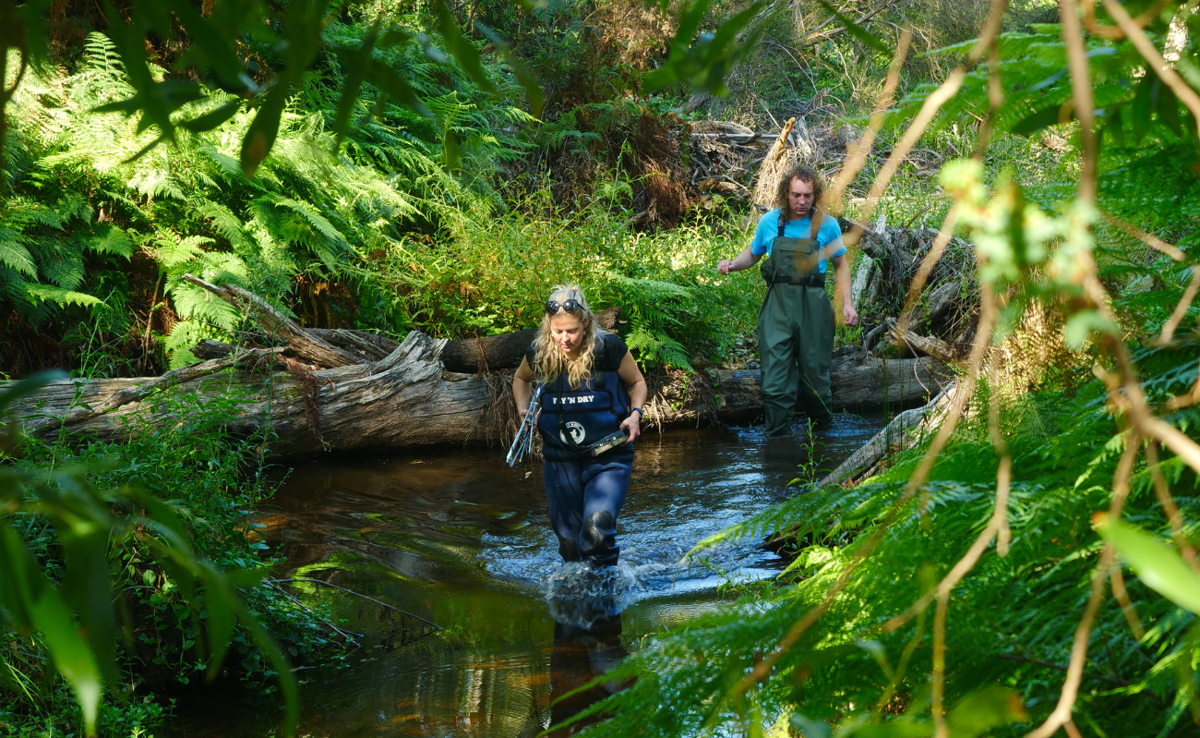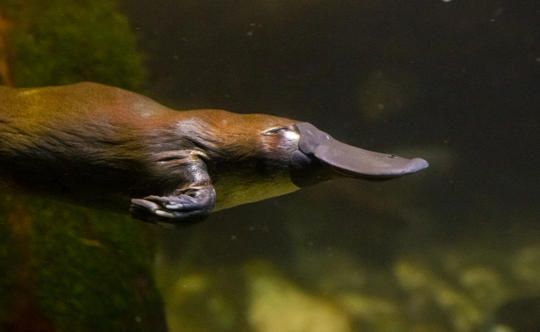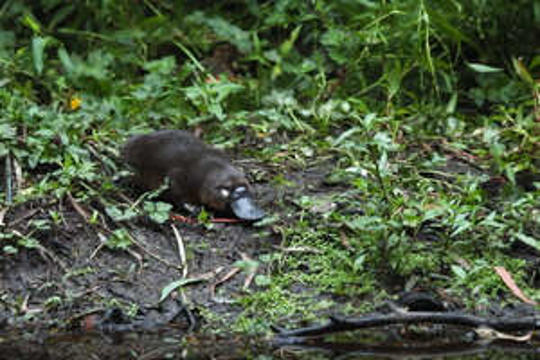
Protecting the rare, preserving the remarkable
Will you help us this year in protecting an Australian icon and safeguard the future of the Platypus, which are listed Vulnerable in Victoria?
Most people think of Platypus as shy and elusive. But Platypus Specialist at Healesville Sanctuary, Dr Jess Thomas, sees something very different.
After years of close observation and research of this misunderstood marvel, Dr Jess describes the Platypus as bold, inquisitive, and playful eating machines. They love exploring new things, tearing them apart with curiosity and enthusiasm. Their personalities are vibrant, however because we rarely see them in the wild, we often miss this side of their character.
We usually glimpse Platypus from a bridge or a riverbank, a fleeting moment that represents only a fraction of their lives. But out of sight doesn’t mean out of harm’s way.

Hidden Human Impacts
Platypus are increasingly affected by human activity, often in ways we don’t realise. Litter like hair ties, milk bottle rings, and fishing line flows through stormwater drains and ends up in creeks and rivers. Platypus become entangled, injured, or worse.
This year, in just ten days, the Australian Wildlife Health Centre at Healesville Sanctuary treated five Platypus, victims of dog attacks, stormwater pollution and habitat disruption. These were preventable injuries caused by everyday human actions.
Healesville Sanctuary have completed stage one of the Australian Platypus Conservation Centre (APCC) bolstering capacity to care for the iconic native species. Stage one includes a facility to rehabilitate and return sick or injured Platypus to the wild, featuring nine connecting ponds of various depths and water flows, banks for burrowing and crystal clear water. Everything is specifically designed with Platypus in mind, so they maintain physical fitness while mimicking wild conditions to encourage natural behaviours.
Platypus live in many of our local waterways. We and the community have a responsibility to look after these animals.
Will you help secure a future for this Australian icon?
Our unique role
Healesville Sanctuary has been the cultural home of the Platypus since we opened in 1934, bringing people and Platypus together. Being the first to understand their biology sufficiently, we have been able to care for and then breed Platypus, making great contributions to the global understanding and conservation of this uniquely Australian species.
Over many decades of aspirational and tireless work, the Sanctuary has established a world-wide reputation for crucial research, bringing us closer to fully understanding the mysteries of this iconic species.
Supporter Helen Wilson has felt deeply connected to Platypus from a young age. Her contributions have been vital to the conservation of the species.
Helen explains, “I have loved platypuses since I was a small child, they are very playful and have lots of personality. I’d inherited some money and couldn’t think of a better cause than supporting scientific research and conservation of my favourite animal, in memory of my parents. Donating to Zoos Victoria is like opening a door to another world and doing your bit to keep the world together when it is facing so many challenges. Anyone can donate and every bit counts.”
The Power of Connection
The truth is, we’ve barely scratched the surface of understanding this remarkable animal. And that’s why we’re building the Australian Platypus Conservation Centre (APCC), a world-first facility designed to connect people with Platypus in ways never before possible.
The APCC will be more than a habitat. It will be a place where visitors can witness the Platypus’s natural behaviours, learn about the threats they face, and discover how everyday actions — like picking up litter or keeping dogs on-leash near waterways — can make a real difference.
By helping people see Platypus as Jess and Helen see them (curious, intelligent, and worth protecting) we can inspire a new generation of conservationists and drive lasting change.
The Australian Platypus Conservation Centre will feature deep and shallow aquatic zones that reflect wild conditions, a lunar cycle system that mimics moon phases and seasonal changes, and immersive elements like rain simulations, scent extraction fans, and native plantings. The improved nocturnal habitat will include land and aquatic spaces that reflect the Platypus’s semi-aquatic lifestyle. We’re also investing in cutting-edge research, including dietary studies exploring how Platypus use electroreceptors to hunt, with the goal of improving breeding success and welfare outcomes both in captivity and in the wild.


Our vision is to continue our work of connecting people with Platypus, showing the community the conservation challenges the species faces and empowering people to take action to protect them.
Healesville Sanctuary’s beautiful World of Platypus, generously sponsored by the Myer Family, has been at the forefront of this work ever since it first opened in 1994. The facilities, whilst groundbreaking at the time, are unfortunately rapidly ageing. It is becoming increasingly challenging to bring the Platypus to our visitors in an engaging way that also meets our growing understanding of the animal’s welfare and biological needs.
We seek now to reimagine how to connect Platypus and people, with a full restoration of the World of Platypus to create The Australian Platypus Conservation Centre to ensure that we do not lose this unique and iconic species forever.
This is our chance to get this iconic Australian species off the path to extinction, but we can only make a difference with your support.